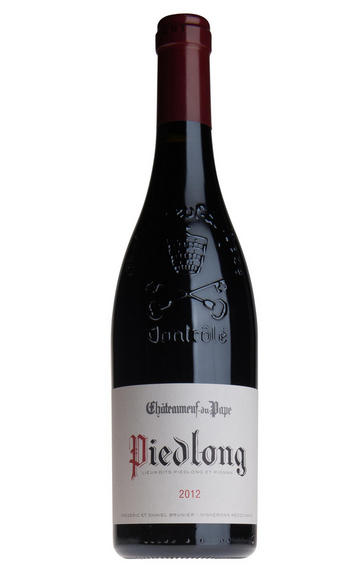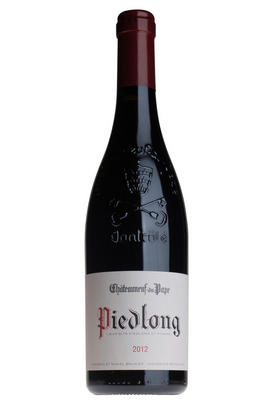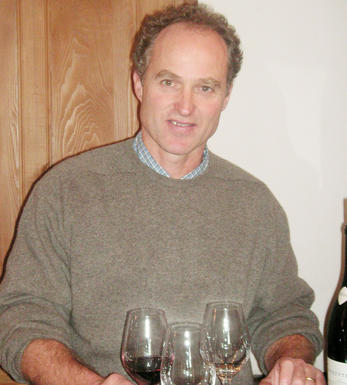
2012 Châteauneuf-du-Pape, Piedlong, Domaine la Roquète, Brunier

Critics reviews
Jeb Dunnuck - 31/10/2013
About this WINE

Domaine La Roquette
Henri Brunier (of Vieux Télégraphe fame) bought this Châteauneuf-du- Pape estate in 1986. The 27 hectares of vineyards are located on a rocky plateau north of the village. They are planted with 70% Grenache, 20% Syrah, and 10% Mourvèdre and the average age of the vines is over 40 years old.
The estate is now run by brothers Daniel and Frederick Brunier. A new winery was built in the mid 1990s and was first used for the 1998 vintage. The grapes are hand picked and are then fermented for 15-20 days in temperature-controlled stainless steel tanks. The wine remains in tanks for a further year before being transferred into oak casks where it is aged for a further 8 months. It is bottle unfined and unfiltered.

Châteauneuf-du-Pape
The most celebrated village of the Southern Rhône, Châteauneuf-du-Pape is the birthplace of the now indispensable French Appellation d’Origine Contrôlée system – imperfect though it may be. Compared to the Northern Rhône, the vineyards here are relatively flat and often feature the iconic galet pebbles – the precise benefits of which are a source of much debate. Minimum alcohol levels required by the AOC are the highest in France, but at 12.5% it is well below the natural generosity of Grenache, which only achieves its full aromatic potential when it is fully ripe and laden with the resultant high sugars. Syrah and Mourvèdre contribute the other defining elements in the blend, adding pepper, savoury spice and structure to the decadent Grenache. There are a further 10 permitted red grape varieties which can be used to adjust the “seasoning”. Of the five white varieties permitted, it is Grenache Noir’s sibling – predictably perhaps – Grenache Blanc, which dominates, though Roussanne shows a great deal of promise when handled well, notably at Château de Beaucastel.

Southern Rhône Blend
The vast majority of wines from the Southern Rhône are blends. There are 5 main black varieties, although others are used and the most famous wine of the region, Châteauneuf du Pape, can be made from as many as 13 different varieties. Grenache is the most important grape in the southern Rhône - it contributes alcohol, warmth and gentle juicy fruit and is an ideal base wine in the blend. Plantings of Syrah in the southern Rhône have risen dramatically in the last decade and it is an increasingly important component in blends. It rarely attains the heights that it does in the North but adds colour, backbone, tannins and soft ripe fruit to the blend.
The much-maligned Carignan has been on the retreat recently but is still included in many blends - the best old vines can add colour, body and spicy fruits. Cinsault is also backtracking but, if yields are restricted, can produce moderately well-coloured wines adding pleasant-light fruit to red and rosé blends. Finally, Mourvèdre, a grape from Bandol on the Mediterranean coast, has recently become an increasingly significant component of Southern Rhône blends - it often struggles to ripen fully but can add acidity, ripe spicy berry fruits and hints of tobacco to blends.


Buying options
Add to wishlist
Description
Piedlong, the artist formerly known as ‘L’Accent de Roquete’, is the name of the windy plateau where old vine Grenache defies the elements on pebbly soils. For those who follow such things, the old Domaine la Roquète label itself has also been discontinued, with its fruit now integrated into the Télégramme. Be that as it may, this is an outstanding effort. One can almost taste the Mistral in its sinewy pores; 10% Mourvèdre adds a dark soul to this otherwise supremely pure wine….’ethereal’ to use another of Daniel’s words.
Simon Field MW, Rhône Wine Buyer
In his quarterly newsletter, ’Sémaphore’ Daniel Brunier does not mince his words when he describes the 2012 vintage as ‘simply phenomenal’, inculpating ‘freshness of fruit, balance, and serious tannic structure’ for this state of affairs. And so it proves that in all three wines that there is both power and lightness of touch. The ballet dancer Carlos Acosta comes to mind, or even Nureyev himself.
wine at a glance
Delivery and quality guarantee